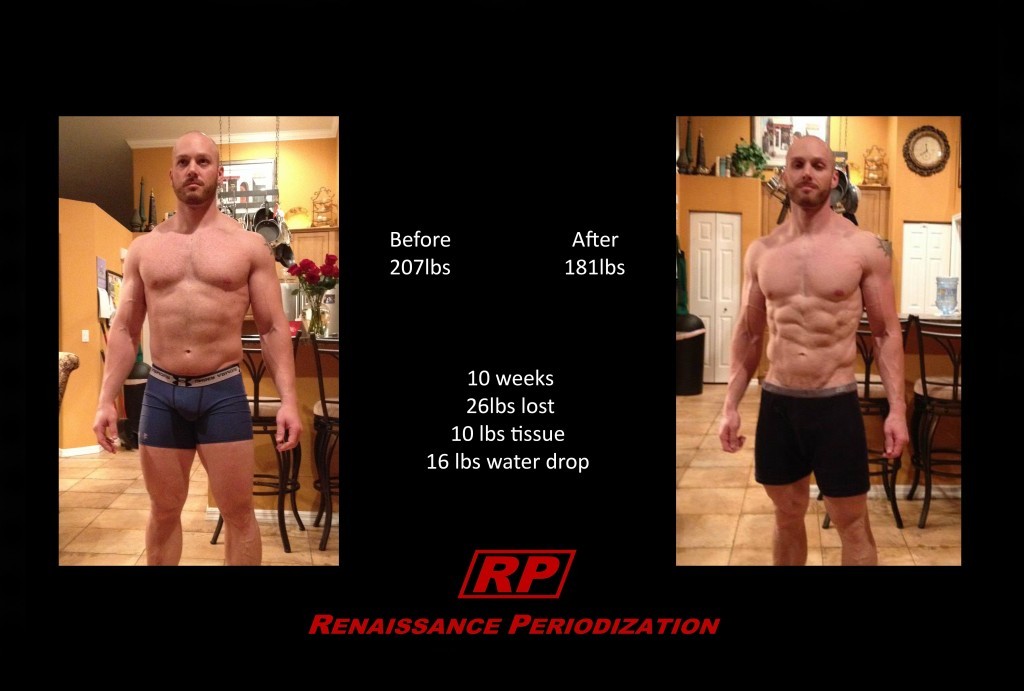In the first articles in the nutrition series, we established that Powerlifting Nutrition primarily serves two purposes: performance enhancement and weight management. In this particular article, we’re going to hone in on the topic of weight management.
Previously, we discussed the idea that a lifter is going to be at an advantage when he weighs the maximum amount allowed in his weight class. This is going to both maximize the amount of muscle he carries going into that class. Weighing the max is also going to allow him to eat the most food possible which will enhance his performance.
Now, we also established that a lifter wants to enter a weight class at a competitive body fat percentage. As discussed previously, for most people, this is going to be somewhere between 8-15% body fat.
When Should You Move Up A Weight Class?
When you take all of this data into consideration simultaneously, it raises an interesting question: when should a powerlifter consider moving up a weight class?
At first glance, the answer might appear to be that the lifter should move up a weight class when they can no longer stay above their “minimum competitive body fat” threshold while still making weight. While this answer is close to correct, it doesn’t take into account one of the most prominent competitive practices of all powerlifters: cutting weight for a meet.
What is Cutting Weight?
“Cutting Weight” describes a combination of practices that are designed to temporarily manipulate body weight in the short term. In part, these practices include manipulating carbohydrate intake, sodium intake, and water intake to produce short term dehydration and a decrease in overall water retention. These practices can also include, but are not limited to, emptying the gut via liquid diets and laxatives; sweating weight via saunas, steam rooms, and hot baths; and taking natural (caffeine and dandelion root) and/or prescription diuretics (such as Lasix).
Simply put, powerlifters, and other weight class athletes, often use various “tricks” to cut as much as 10-15% of their bodyweight in a 24 hour period. While many of these practices can be unsafe if performed incorrectly or taken to extremes, they are nevertheless highly effective. In the famous case of Matt Kroc, an elite powerlifter, he once lost 35lbs to make weight for a meet.
How Much Weight Should You Cut?
How much weight you should cut depends on a variety of factors.
First of all, how old are you? If you’re still developing physically, I’m going to recommend that you don’t cut at all. Some research suggests that drastic bodyweight manipulation, such as cutting weight, can inhibit growth and maturity in youth athletes. As such, I cannot in good conscience recommend these practices to those of you who are still teenagers.
Second, is this your first powerlifting meet? If it is, I’d highly recommend that you skip any drastic weight cut. If you’re only going to lose a few pounds then fine. Otherwise, you do NOT need this stress in addition to the already overwhelming experience of doing your first competition. Wait until you’re comfortable with the actual meet process before attempting to do a significant cut.
Lastly, and to finally answer the question, how long do you have between weigh-ins and when you need to be on the platform? In Powerlifting, there are two typical scenarios: a 24 hour weigh-in and a 2 hour weigh-in.
Cutting for a 24 Hour Weigh-In
While I’m going to wait for the next article to provide a full protocol for actually cutting weight, I do want to discuss the basic overview in this article.
With a 24 hour weigh-in, an athlete can be far more drastic in their weight cut attempts. In fact, cutting about 10% of your bodyweight is not unheard of and, in most cases, can be done both relatively easily and safely. In fact, when prescription drugs, IVs, and other risky measures are undertaken, elite powerlifters have cut as much as 15% body weight.
Now, I personally cannot recommend the use of these practices and I will not be teaching anyone how to do it. If you’re interested, you’re going to need to seek out professional help. And you’ll be glad you did. Cutting more than 10% bodyweight without guidance is a fool’s errand.
Why You Can’t Cut As Much for 2 Hour Weigh-Ins
Cutting anywhere near 10% for a 2 hour weigh-in is foolish. Most athletes will experience SIGNIFICANT performance detriment due to dehydration.
The reason that athletes with a 24 hour weigh-in can cut more weight is primarily due to two factors.
-
- Hydration
The first is that much greater degrees of rehydration can be accomplished in 24 hours than can be accomplished in 2 hours. In other words, you can sweat out a whole lot of water weight via saunas, hot baths, or other water cutting practices and still have plenty of time to gain all that water back. That simply isn’t the case for a 2 hour weigh-in. Significant dehydration can decrease anaerobic performance by more than 10%. Dehydration simply isn’t acceptable for elite powerlifters.
-
- Glycogen
The second reason has to do with glycogen replenishment. In an oversimplified version of the physiology, dietary carbs are stored as glycogen. A single gram of glycogen requires 3-4g of water to be stored. Most athletes will require approximately 8-10g of carbs per pound of LBM to completely replenish glycogen. This means a typical powerlifter might have 1-2kg worth of glycogen in their system which comes with an additional 3-8kg worth of water. All in all, we’re likely talking about anywhere from 10-20lbs of water that can be shed through dietary manipulations for a male powerlifter.
Your body uses glycogen for a variety of processes. They are too innumerable to list. If you’re interested in the subject to a greater degree, Lyle McDonald’s “The Ketogenic Diet” is pretty much the Bible of glycogen in terms of a scientific reference.
In any case, of most importance to consider is that glycogen is one of the primary sources of fuel for ATP production. In other words, glycogen fuels your performance on the platform. A full glycogen tank means high energy and it also means that your muscles are “pumped” and “full” – this improves leverages for lifting heavy weights.
By ceasing the consumption of dietary carbohydrate intake, one can “deplete” glycogen. With complete cessation of carbohydrate intake, one can enter a state of ketosis within a matter of days. Glycogen can be fully depleted inside of a week with relative ease.
However, glycogen resynthesis takes significant amount of time. Depending on the size of the athlete, you’re looking at rates of approximately 50-150g per 2 hours. Additional intake will not increase rates of glycogen resynthesis because this process can only move so fast.
In practical terms, what all this glycogen talk means is that your average powerlifter on a 2 Hour Weigh-In cannot afford to do very much in the way of carbohydrate manipulation. They simply don’t have the time to resynthesize any significant amount of glycogen.
Cutting For A 2 Hour Weigh-In
So, the question then obviously becomes… How much SHOULD you cut for a 2 hour weigh-in? This is a highly individual question, but I’ll attempt to give what I believe to be a reasonable answer.
Because you’re not going to be able to do any significant sweating or glycogen manipulation, for a 2 hour weigh-in, you’re limited primarily to water loading, sodium manipulation, and method which “empty the gut”. In most cases, this combination of practices is going to not going to net you more than 5% of your bodyweight which, frankly, is already pushing it.
Personally, I’d recommend staying within about 3kg of your weight class for a 2 hour weigh-in. If you’re 5% above the limit about a month away from your meet, I’d suggest a mini-diet going into the meet which will allow you to lose a few pounds of fat and make the actual weight cut more tenable.
All in all, there just isn’t much you can do safely while maintaining performance when you only have a 2 hour weigh-in.
Answering The Ultimate Question…
When Should I Move Up A Weight Class!?
After going through all of that information, we can finally answer the initial question to the topic at hand: when should you move up a weight class?
You should move up a weight class when you can no longer cut enough bodyweight (5-10%) while staying above your minimum competitive body fat threshold (8-12% BF) to make the weight class you are aiming to make.
After about three to five years of training, you’ll settle into more of a long term weight class. At that point, it will be more about recomposition that true cutting or bulking. Instead of bulking and cutting through a body fat range, you’ll start bulking and cutting within a weight range. That weight range will be your weight class + 5-10% depending on how long your weigh-in is.
I hope that sufficiently answered the question of WHEN to move up a weight class. In the next article, we’re going to talk about HOW to actually cut weight.
Did you enjoy the Powerlifting Nutrition Series?
If so, I highly recommend you check out our eBook: EatingToWin. The book contains absolutely everything you need to know about how to set up the optimal diet for YOU personally as a powerlifter, how to identify the right weight class to maximize your competitiveness, how to cut weight like a PRO so that you can drop a weight class without performance loss, and, of course, an entire section on recommended supplements with the supporting evidence behind each recommend. Grab your copy now!
Like this Article? Subscribe to our Newsletter!
If you liked this articled, and you want instant updates whenever we put out new content, including exclusive subscriber articles and videos, sign up to our Newsletter!
Questions? Comments?
For all business and personal coaching services related inqueries, please contact me:
Table of Contents
Powerlifting Nutrition: How To Pick Your Weight Class
Powerlifting Diet: Cutting and Bulking
The Best Way To Measure Body Fat For Powerlifting
When To Move Up A Weight Class
How To Cut Weight For Powerlifting: 24 Hour and 2 Hour Weigh Ins
How To Diet For Powerlifting: Calories, Reverse Dieting, and More
Setting Up Your Powerlifting Macros
Meal Frequency and Nutrient Timing in Powerlifting
Eating Healthy for Powerlifting
Best Powerlifting Supplements



